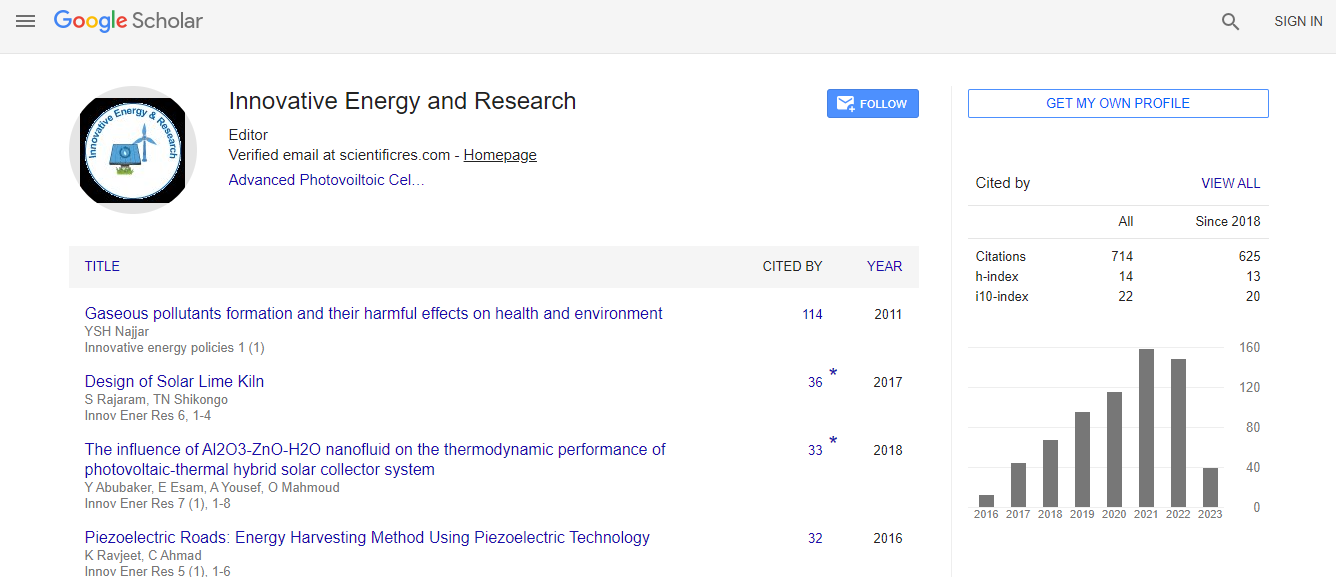Alfa fiber-polyurethane composite as a thermal and acoustic insulation material for building applications.
Abstract
Insulating materials contribute significantly to the reduction of thermal building loads and therefore to moderate energy consumption, their effectiveness depends mainly on the value of the thermal conductivity (k) which depends on the density, the porosity and the moisture content of material. Polymers have become an important part of materials engineering. The rapid growth of these new engineering materials is due to their technical specific properties such as lightweight, chemical stability, elasticity and their flexible processing methods. Despite the interesting properties of these types of materials, they come in most cases from petrochemicals origin, which makes their uses harmful to the environment. Hence, it would be interesting to replace or reduce the uses of this material by ecologically ones. The burgeoning demand for clean environment has led the innovation of green materials and utilization of natural materials. This interest has boosted the use of vegetable fibers as reinforcements in composite materials thanks to the various benefits that they present such as their renewable and biodegradable nature and impose no adverse effects on environment. The aim of the present work is to introduce natural alkalized alpha fibers as reinforcement in the preparation of partially biodegradable green insulation material composite. Thermal conductivity, mechanical properties and acoustical performances of composites were investigated as a function of fiber content. We found that 10% of alkali solution improve the water absorption rate, mechanical and interfacial properties of the fibers. Composites made of Alfa fibers -polyurethane resin has exhibited good mechanical and acoustical properties. At 20% of reinforcement the Young’s modulus and tensile stress increased by 48.14% and 74.12 %, respectively. The polyurethane (PU) filaments can likewise be delivered by means of the electrospinning cycle (Predicini and Farris, 2003). This technique has been known since 1934. In this strategy fiber properties rely upon electric field consistency, polymer thickness, electric field strength and distance between the spout and authority. The possibility of the electrospinning cycle depends on an outside electric field applied to charged polymer liquids or melts. This outer electric field prompts electric charges on the polymer surface that beat the surface pressure, and thusly a fly is delivered. This electrical power can likewise prompt a flimsy fly as it voyages. On account of polymer liquid, the normal natural dissolvable is vanished amazingly quick (millisecond timescale) to deliver electrically charged nanofibers. The procedure is legitimate just for charged polymer arrangements or melts with adequate sub-atomic traps. In the electrospinning cycle, a charged bead of arrangement suspended toward the finish of a hairlike disfigures into a conelike shape, or Taylor cone, when exposed to a Coulombic power (Taylor, 1969). the taylor cone is framed because of an adjusting of the appalling idea of the charge conveyance on the bead's surface and the surface strain of the fluid (Reneker et al., 2000). As the charge is expanded over a basic voltage, a steady stream is released from the tip of the Taylor cone. A fly of low sub-atomic weight liquid separates into little beads, a marvel named electrospraying, while a polymer arrangement with adequate chain cover and entrapments doesn't separate yet goes through the supposed bowing shakiness that causes a whiplike movement between the slim tip and the grounded target (Hohman et al., 2001). The dangers of the electrically constrained stream in the electrospinning procedure have been examined (Shin et al., 2001). One hypothetical model for deciphering the connection between twisting unsteadiness, electric field, and arrangement stream rate has been accounted for (Shin et al., 2001). It is this twisting shakiness that represents the serious level of single fiber drawing, coming about in submicrometer-sized strands.

 Spanish
Spanish  Chinese
Chinese  Russian
Russian  German
German  French
French  Japanese
Japanese  Portuguese
Portuguese  Hindi
Hindi 
